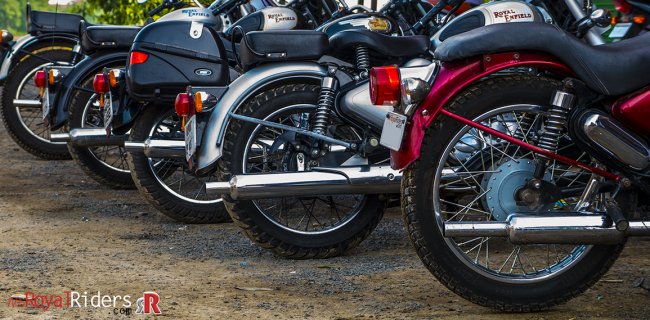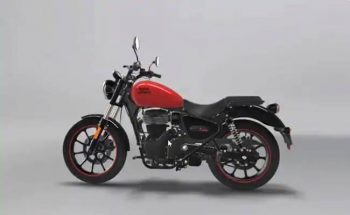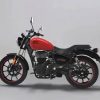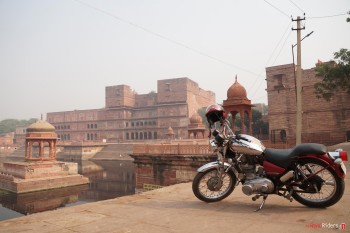Whenever you see a motorcycle coming, first thing you notice about its character is the exhaust note. Ofcourse their are visual cues but its the sound which gives you stares from the other side of the street. Not surprisingly, even the non-rider uncle from neighborhood can recognize you coming if your motorcycle has a distinctive exhaust note.
And its no secret that Royal Enfield Motorcycle’s with their big single cylinder powerhouse makes distinctive thumping sound which is adored by millions worldwide. I have seen people falling in love with RE just because of feel and thump they get from its large displacement single cylinder powertrain.
Exhaust note or sound is so much important among Royal Enfield fanatics that almost every owner of this bike has changed their silencer or muffler atleast once during lifespan of the bike ownership. I barely know any veteran rider who has not changed their exhaust ever. Needless to say, there are variety of after market silencers (also known as muffler) available with so many sizes, shapes, names and brands that its almost difficult to choose one suitable for your bike. If you look out for advices, there are again plenty of them. Suggestions come in the form of short-bottle, long bottle, dolphin, upswept, red-rooster, wild-boar, Goldstar , free flow, free flow with glass wool and many more.
Have seen a lot of people asking for advice for mufflers (silencers) and primarily people wants to change from stock (factory provided) to custom to alter the exhaust note aka sound of the bike, some of them are also concerned about performance and engine life. No matter how much its in trend but the real science and technology behind an effective muffler is far more deep then you may have ever imagined.
Today we are going to discuss various type of muffler (commonly known as silencers) and their technological aspect. This guide applies not only to Royal Enfield but also all kind of other cars and bike. Hopefully when you finish reading this, you will be educated enough to make intelligent choice for custom muffler if you ever need one.
Market is filled up with so called high performance exhausts, every manufacturer claims to have the best but hardly anyone tells how why its best.
Although there are various kind of muffler / exhaust available but we can broadly classify them into “strict silencer” and “tuned pipe”. Other than this, there is also combination of both system.
Purpose of Silencer or Muffler
As the name suggest, primary purpose of muffler is to reduce the noise engine produce when hot gases are vented out from internal combustion engine on each blast. In simple words, first it needs to absorb and dissipate noise, then have to move exhaust gases while maintaining power and performance.
So called performance muffler emphasize on increasing power delivery as well acoustic aesthetics while stock silencers are mostly to comply with sound and emission norms.
Therefore, it is not that simple as it may sound, as you can see designing a proper and efficient silencer which can balance between sound pulses and performance is not straight forward task. There are lots of factors and scientific techniques which affects the design of a silencer including the engine type, piston, airflow, size, technology used, etc. Above all, there is no one-fit-all solution of any kind of silencer.
Acoustics of Muffler
As we are discussing, sound is crucial design factor (along with performance). So, how does a muffler produces its distinctive sound, there are many documents covering how sound waves travels, in short its just vibrations that spreads as a wave through air which is also called pulses.
In an internal combustion engine, these pulses are created when the exhaust valve opens and the hot gas from the combustion chamber enters the exhaust system. The exhaust gas exits the combustion chamber under pressure and meets the low pressure gas in the exhaust pipes and mixes up. When these pulses reach your eardrum, the eardrum vibrates back and forth which causes the brain to recognize the motion as sound. It is possible to add multiple sound waves together and get less sound by lowering the pressure pulses. And here we use muffler to manipulate those pulses of sound as per our need.
Techniques of Noise Cancellation
The restrictive or true silencer achieve noise reduction by forcing gases through smaller diameter passages causing the flow of the gases to back up and form a type of air damper for sound. They use specially designed chambers with plates or perforated tubes (also known as baffles), the are also capable to isolate and diminish a target range of tones. Mufflers can be designed to have aggressive or a super quiet exhaust note depending on the noise canceling strategy built into the muffler.
However, this technique has by-product which can hit performance of the engine if is not properly tackled. As the exhaust gases hits different pipe diameters and temperatures, some of the pressure wave is reflected backwards. This is called back pressure. Too much back pressure will result in chocking of engine and thus lower performance and mileage.
On the other hand, the “tuned pipe” or performance muffler has a resonant frequency of operation and has generally minimalistic or no restrictive flow, and when the engine is operating at this speed, the muffler actually causes a timed partial vacuum at the engine’s exhaust port, helping the engine vent exhaust gases. The net result is a boost of power at that operating speed due to the engine breathing better.
Some of the performance muffler uses absorbing designed so that the sound entering the muffler interacts with packing material and is converted to heat by the frictional process. This muffler’s performance relies on absorption by the packing material for performance. These kind of muffler were quite famous in 50’s and 60s and these are the one attracts more attention through their deep sound.
Does it means we need to avoid all back pressure and need exhaust which allow free flow of air.. not really, read on.
The role of Back pressure in Muffler
There is a general thumb of rule is that lesser the back pressure, louder the muffler. However, small amount of back pressure is crucial for optimal engine performance. Back pressure in the exhaust system pushes any unburned intake back into the engine. Without this back pressure, some intake is lost, leading to less than optimal fuel consumption.
Another benefit of back pressure the power they provide it provides at lower RPMs. No wonder, some people consider muffler with least back pressure for loudest possible sound. While this certainly produces the loudest sounding bike possible, it also hinders the overall performance of the motorcycle. Without any back pressure, a motorcycle may be loosing some power and will not reach maximum efficiency until a much higher number of RPMs, which is not optimal for most street drivers.
Hence, you need to have some sort of back pressure depending upon the kind of machine you are using in order to achieve better performance, more mileage.
Two Stroke Engines and Four Stroke Engine Mufflers
Most of the things we discussed so far applies directly to four stroke engines but the Two-stroke engines have different exhaust systems, though the basic muffler design is similar. A two-stroke pipe uses its reflective pressure wave to keep the fuel/air mixture inside the combustion chamber. Most of this tuning is done in the pipe itself, but muffler length and diameter play a part. Interestingly two-stroke sound waves do not travel as far as four-stroke waves which technically makes four stroke engine more noisy. But with advancement in technology used in mufflers, newer engine exhaust notes are generally quieter than previous generations.
The Verdict
By no means its a comprehensive guide, there are whole lot of other things those are involved in science of mufflers. However, by now you should have basic knowledge of Mufflers ie. silencers. You know they are not just simple pipes or chambers damping harsh sound engine produces but they have correlation with performance of your vehicle.
They reduce sound waves by converting the sound wave energy into heat by passing the exhaust gas and it’s accompanying wave pattern, through perforated tubes and tuning chambers. Passing into perforations and reflectors within the chamber forces the sound waves to dissipate their energy. There are several techniques to do so but its not just easy as taking some chamber or pipe, designing it for visual aesthetics.
As we learned above, lesser the restriction in muffler, more power in engine achieved over stock muffler but free flow silencer are also not good as they hampers optimal operation of engine by reducing back pressure. Though there long term effect are not observed but why would one want to make your ride’s engine revving at lesser power ?
Nevertheless, the stock exhaust system of any bike is tested and optimized to give the maximum efficiency possible while producing fewer emission gases. Technically its the best your bike need, however, there are always room for after-market custom exhaust if you can priority not just balance for efficiency.
Hopefully you have enjoyed this articles as much as I enjoyed putting it together for you after careful research and study along with personal experience. However, if there is any error or correction required then please do let me know, I will be more than happy to fix if anything is broken here. On next article for this series, we will be covering Royal Enfield specific silencers and effects.










Hi
For classic 350 which type of silencer is suitable with the good sond effect.
I was thinking to change silencer from last 8 months but i didn’t get any idea on this. But above article is clear.
Hopefully waiting for your reply.
Thank you!
Yogesh